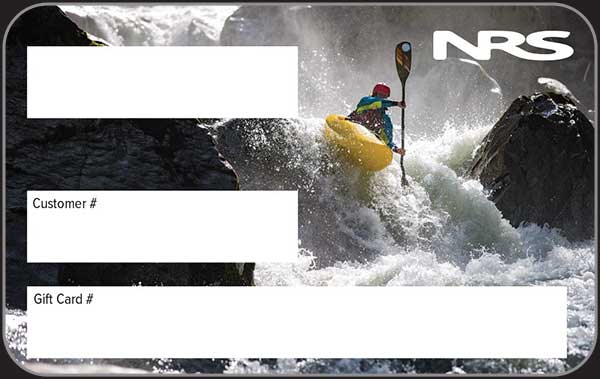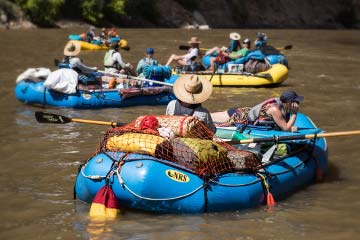
Life Jackets Stop the Senseless Loss of Life
A good boating friend, NRS Purchaser Jenni Chaffin, recently sent me a link to a news clip from a northwest TV station. The camera crew was recording a group of folks getting ready to float a river over in western Oregon. Although they were putting on in some flimsy vinyl boats and IKs, they were identified as “rafters.”
Some had on life jackets, some did not. All were dressed in T-shirts, jeans and shorts. And what really cut me to the quick: there were toddlers and small children in the boats. Now, I’m familiar with this river, and I know its waters are cold right now, coming off the abundant Cascades snowpack. The news clip then showed a life jacket floating by, followed by an interview with a wide-eyed, wet and shocked person describing the flip and the cold. Another boater was sitting on the bank across the stream, head bowed, obviously drained.
These people lived. Not through any good planning or skill on their part. It just wasn’t their time. It could easily have been one of those tragedies we too often read or hear about: “Today two local-area residents drowned while boating the XYZ River. Names have not been released, pending notification of next of kin.”
And least we are quick to smugly dismiss this as just a phenomenon of bozos in Hypermart boats without the sense to pour pee out of a boot; it happens to real rafters and kayakers too. I recall sitting in a campsite up on the Snake River in Hells Canyon on a layover day. We were relaxing in our chairs, sipping a cold one when a raft floated by with the people sitting around on the tubes, not wearing life jackets. We all commented that they didn’t seem to be taking things very seriously.
Later a jetboat came to our camp, with a grim-faced boater from that earlier raft. They reported that another boat in their party had flipped in Rush Creek Rapid upstream from us. One of the people, who wasn’t wearing his life jacket, was missing. They asked us to be on the lookout for the body. Needless to say, the rest of our layover was spent scanning the river, with mixed feelings about helping with a body recovery.
Damn it, there’s no excuse for this; there’s a reason they’re called “life jackets”—they save lives! I think that we somewhat diminish that message when we use the Coast Guard term “Personal Flotation Device.”
None of the excuses for not wearing your life jacket are valid:
“I swim like a fish; I don’t need a PFD.” BS. Michael Phelps can out-swim any of us and many combinations of the power of the water and other circumstances could overwhelm him.
“Jackets are too uncomfortable.” BS. Today’s life jackets are very advanced and comfortable. We carry over 40 life jackets, and there’s one out there that will be all-day comfortable for anyone.
“They’re too expensive.” BS. Yeah, you can spend a lot on a specialty jacket, but there are many comfortable, affordable jackets on the market. Besides, have you priced funerals lately?
“I wear mine when there’s a rapid, but I don’t see any sense in wearing it between rapids.” BS. Caca occurs. Years and years ago, on one of my first trips down Hells Canyon, in my little six-man Udisco paddle boat, we dumped into that same hole in Rush Creek Rapid that killed the rafter I referred to earlier. We had our heads in the cooler and failed to notice that ominous dome-shaped horizon until it was too late. The difference—we all had on our life jackets.
At the end of Don’t Boat Without Number Two, I shared my personal history of the loss that comes from failure to wear life jackets. It’s not something you want in your life or the lives of your loved ones.
To help reinforce the need to wear life jackets, especially when boating in cold water, here’s a video entitled Cold Water Boot Camp USA. It’s facilitated by Dr. Gordon Giesbrecht, a renowned expert in the effects of cold water immersion and the coauthor of Hypothermia, Frostbite and Other Cold Injuries.
Due to your cookie choices, we cannot show you this content. Adjust your settings?
Bottom line: life jackets save lives, and there’s no excuse for not wearing one.
—Clyde
 NRS Gift Card: Always Fits, Always Wanted
NRS Gift Card: Always Fits, Always Wanted




